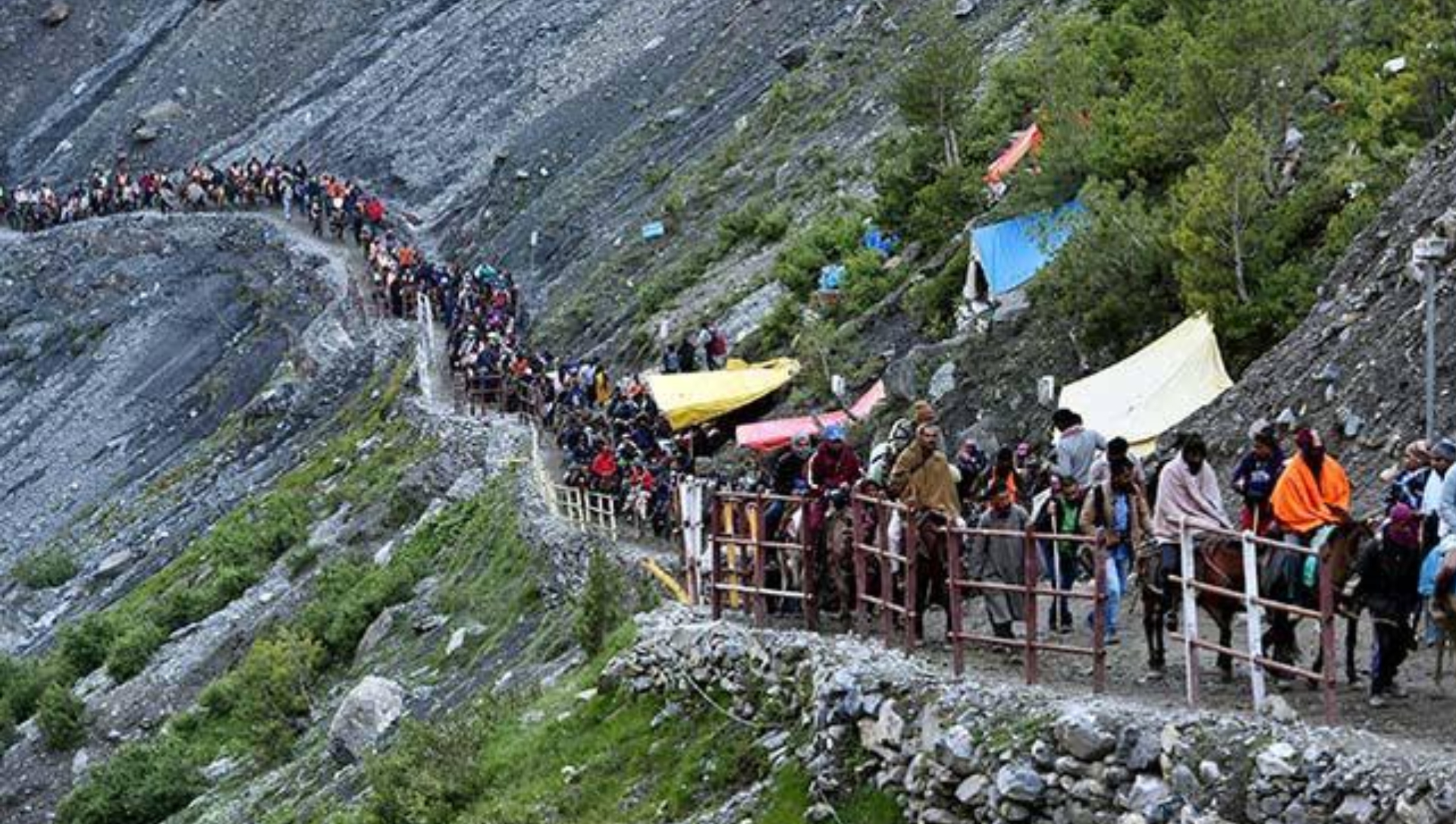

SRINAGAR: Despite the possible threat from terrorist outfits, more than three lakh pilgrims visited the holy shrine of Amarnath. Shri Amarnath Yatra 2022 will come to an end on Thursday.
The 43-day annual pilgrimage to the 3,880-metre-high cave shrine started on June 30 on the twin routes – the traditional 48-km Nunwan-Pahalgam route in Anantnag and the 14-km shorter Baltal route in Ganderbal. Officials said more than 3.10 lakh pilgrims have visited the holy cave this year.
Meanwhile, Amarnath Shrine Board officials stated that the Yatra’s departure from Jammu Bhagwati Nagar base camp has been halted due to a significant decrease in Amarnath pilgrim arrivals.
“They can send another batch before the end of the yatra, but no yatri is coming here now, so no convoy could leave Jammu for the past three days,” officials said.
Bhagwati Nagar base camp has worn a deserted look for the past few days, forcing the operators to end their services. According to officials, it is likely that counters at Bhagwati Nagar will be closed from tomorrow.
On August 2, Jammu and Kashmir Lieutenant Governor Manoj Sinha appealed to pilgrims to visit the holy cave before August 5. He said that the authorities were forced to take such a decision due to bad weather.
Meanwhile, officials said 51 yatris have died during this year’s yatra. The numbers include 15 pilgrims who died in the cloudburst incident near Baltal on July 8.
Officials said that a group of sages, led by the custodian of the holy mace Mahant Dipendra Giri, carrying Chaddi Mubarak, were on their way to the Amarnath cave.
The Chaddi Mubarak has to reach the holy cave on the 11th of August, Shravan Purnima. The 145-kilometre Chadi Mubarak Yatra starts from Dashnami Akhara in Srinagar.
During the yatra route, sages perform havans at Pampore, Bijbehara, Anantnag, Mattan, Aishmuqam and finally at Pahalgam, where the procession takes rest for two days before proceeding to Amarnath holy cave.
This year the government has made an elaborate security arrangement for the yatra owing to the higher threat perception. Security agencies were particularly worried about the use of magnetic bombs by the terrorists.
Not just the number of personnel was increased, but technology was also being used. Drones were placed for aerial surveillance while pilgrims were tagged with RFID to keep track of them.
This was the first Amarnath yatra since the abrogation of Jammu and Kashmir’s special status on August 5, 2019. While the pilgrimage was cut short in 2019, it could not be conducted in the subsequent two years because of the pandemic.